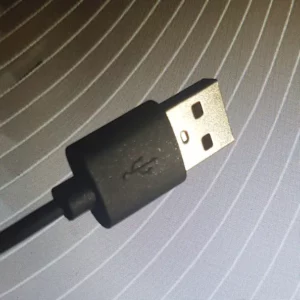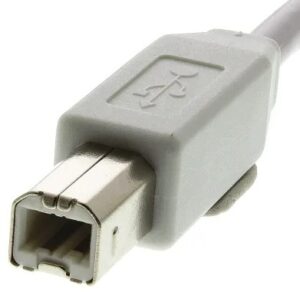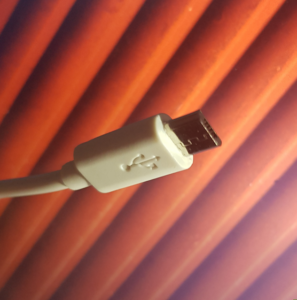USB, or Universal Serial Bus, is a technology that has become the standard for connecting and powering devices.
However, with the advancement of technology, different types of USB connectors have been developed, each with its unique characteristics.
In this article, we will explore the different types of USB connectors, including USB-A, USB-B, USB-C, and others, so you can better understand their differences and which one is right for your needs.
If you’re having problems with connectivity, maybe our article on common USB problems might be able to help.
If you find yourself with a plug of one type and a port of another, don’t forget that adaptors are available to resolve most of your problems.
A friend just opened her iPhone 14 to find the charger cable was not supplied with a type c instead of the usual, previously supplied, type A. A quick search online found a nice cheap usb-c to usb-a adaptor, panic over!
USB-A
USB-A is the most common type of USB connector and is found on the majority of devices.
It is typically found on the end of a cable and is used to connect devices to a computer or other USB-enabled device, you know, the one you can never get it in the right way up first time 🙂 (Why can’t we get the usb plug in first time?)
USB-A connectors have a rectangular shape and are typically the size of a thumb.

USB-B
USB-B is another common type of USB connector and is typically found on the end of a cable that connects to a device such as a printer or external hard drive.
Unlike USB-A connectors, USB-B connectors have a square shape and are typically smaller in size.

USB-C
USB-C is the latest type of USB connector and is becoming the standard for connecting and charging devices.
USB-C connectors are reversible, meaning they can be plugged in either direction. They also support a wide range of protocols, including USB 3.1, Thunderbolt 3, and DisplayPort.
USB-C connectors are typically smaller in size than USB-A and USB-B connectors and have a more rounded shape.

Micro-USB
Micro-USB is a smaller version of the USB-A connector and is commonly found on devices such as smartphones, tablets, and cameras.
It is typically used for charging and data transfer, and it is compatible with USB 2.0 and USB 3.0.

Mini-USB
Mini-USB is an even smaller version of the USB-A connector and is commonly found on devices such as digital cameras and portable media players.
It is typically used for charging and data transfer, and it is only compatible with USB 2.0.

| USB Type | Speed | Description |
|---|---|---|
| USB 1.1 | 12 Mbps | The original USB standard, released in 1998. Now obsolete. |
| USB 2.0 | 480 Mbps | Released in 2000, this is the most common USB standard in use today. |
| USB 3.0 | 5 Gbps | Released in 2008, this standard offers faster data transfer rates and improved power management. |
| USB 3.1 | 10 Gbps | Released in 2013, this standard offers even faster data transfer rates. |
| USB Type-C | 10 Gbps (USB 3.1), 20 Gbps (USB 4.0) | Reversible and versatile, this newer standard can handle data, video, and power all in one cable. It also supports alternate modes for even more capabilities. |
| Micro USB | 480 Mbps (USB 2.0), 5 Gbps (USB 3.0) | A smaller version of the standard USB plug, commonly used for charging mobile devices. |
| Mini USB | 480 Mbps (USB 2.0), 5 Gbps (USB 3.0) | An even smaller version of the standard USB plug, now largely replaced by Micro USB. |
Conclusion
With so many different types of USB connectors available, it can be difficult to know which one is right for your needs.
However, by understanding the characteristics of each type, you can make an informed decision.
USB-A and USB-B connectors are the most common types, while USB-C is becoming the standard for connecting and charging devices.
Micro-USB and mini-USB are typically found on smaller devices such as smartphones and cameras.
Want to know more? Check out our ultimate article – Everything you ever wanted to know about USB
